
Mysteries of the Shan
October 31, 2023 Asian Arms
The sword that is the subject of this article typifies a stereotype, but a well earned one, regarding the Shan states of northern Thailand, Burma and historically extending into modern day Yunnan. Even today these areas are considered an enigma, difficult to access, with rugged terrain, wild and mysterious. This was even more so the case in the previous centuries with the Shan states often being only nominally under any sense of central authority.
The Shan, or Tai Yai are a Tai people, related to the modern day Thai and Lao peoples. Shan are perhaps best known as forming a number of independent statelets between the powerful central plains of Burma and modern day China. These states or Muang where formed around walled or fortified towns with a degree of control over surrounding villages and settlements with rulers known as Sawbwa in Burmese, or Chao Pha in Thai. These were small states, where allegiances regularly changed depending on the prevailing political winds.
These states also served as vital trade routes between China and the Burmese and Thai heartlands. The major rivers of Southeast Asia are not navigable year round at these latitudes meaning that mule caravans were the more reliable method of transport and typically run by Chinese traders from Yunnan. This gave ample opportunity for local Sawbwas to levy taxes. In addition these areas also held valuable resources of their own, not only forest products but in the case of modern Burmese territories, significant amounts of precious stones such as jade.
(1).jpg)
A mule caravan with Shan men circa 1900
These resources, valuable geography and strategic trade routes lead to many, if not near constant conflicts between not only regional empires but the statelets themselves over many centuries. Their location between two major empires, that of China and Burma, meant than many in the Shan states had both Burman and Chinese names, shifting allegiances and a near mercurial ability to divine the prevailing political alliances.
My reasons for illustrating the turmoil of this little visited part of the world is to emphasis that this was in fact not a backwater caught between major powers, but rather a canny and cunning set of polities who deftly balanced their position and equally were quite multi-cultural in their ethnic makeup and political influences. In short, this area of the world is both isolated, connected, a dichotomy and a harmony.
This leads us to the sword in question. It is unique, which is something I have often said regarding dha or daab but this particular piece far exceeds that blanket statement. From the dimensions to the geometry of the blade to the form of the hilt it is not just unique in the summation of its parts, but in the individuality of each element. In fact in 20 odd years of collecting I have not encountered another like it. That encompasses both my own collection, what has been made publicly available online via auction, private collectors dealers etc. Further more I am fortunate to have contacts in the area of Southeast Asian swords who have experience stretching back decades further than my own. They have also drawn a proverbial "blank" regarding another example like this.
That is not to say we cannot infer where the sword is from, I am in fact fairly sure of a general regional attribution and an age. However beyond that we are left at guessing due to the singularity of the piece.
The first impression of the sword is the size, photos to do little to convey the true dimensions. The overall length is far larger than average but the most unusual feature is the width of the blade. The following photo shows the sword in question in the middle with a very large northern Thai Lanna daab at the top and a typical Laos war sword of the same period at the bottom. The discrepancy in not only length but width is immediately obvious.
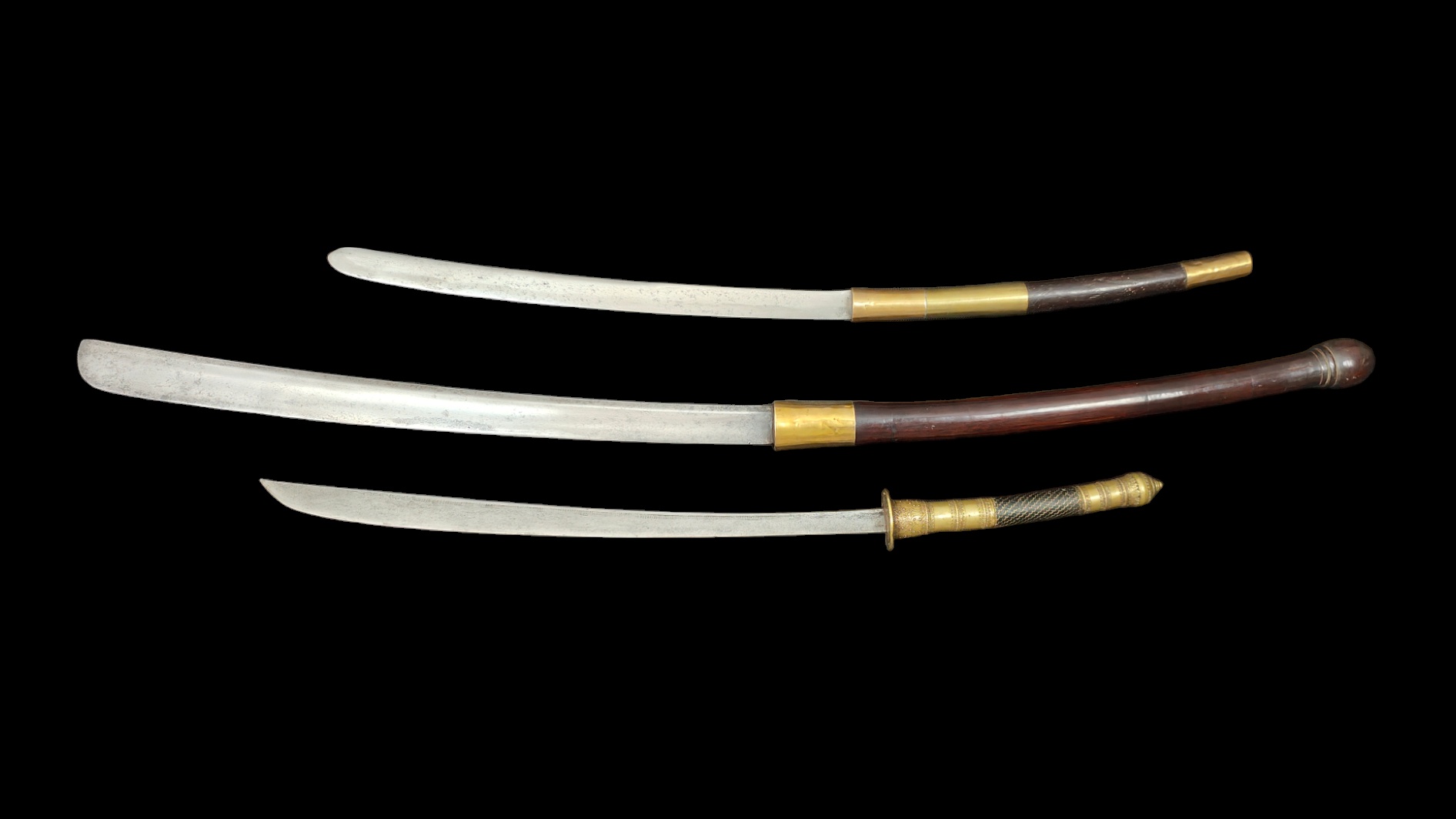
The weight of this sword is also nearly double that of most dha/daab and the ability or method to wield it is more like a polearm than a typical sword. This immediately raises questions regarding its intended use. The sword is not so oversized to simply be a ceremonial weapon, in fact it shows clear signs of use, nor does it exhibit proportions that indicate only a local "giant" could use it. In fact the handle has clearly carved grooves indicating how and where to hold (index) and utilise it. This is a sword obviously made to a purpose which we are left to speculate upon.
One theory regarding these large Southeast Asian swords is that they served and anti-cavalry function, however this is based on assumed influences from similar weapons from China and Japan. This may be born out by specific, examples obviously adapted from outside cultures like the nodachi like weapons I have previously documented in Cambodia. However this sword owes nothing to know Chinese or Japanese types. It is an obvious extension of of Shan or Tai swords.
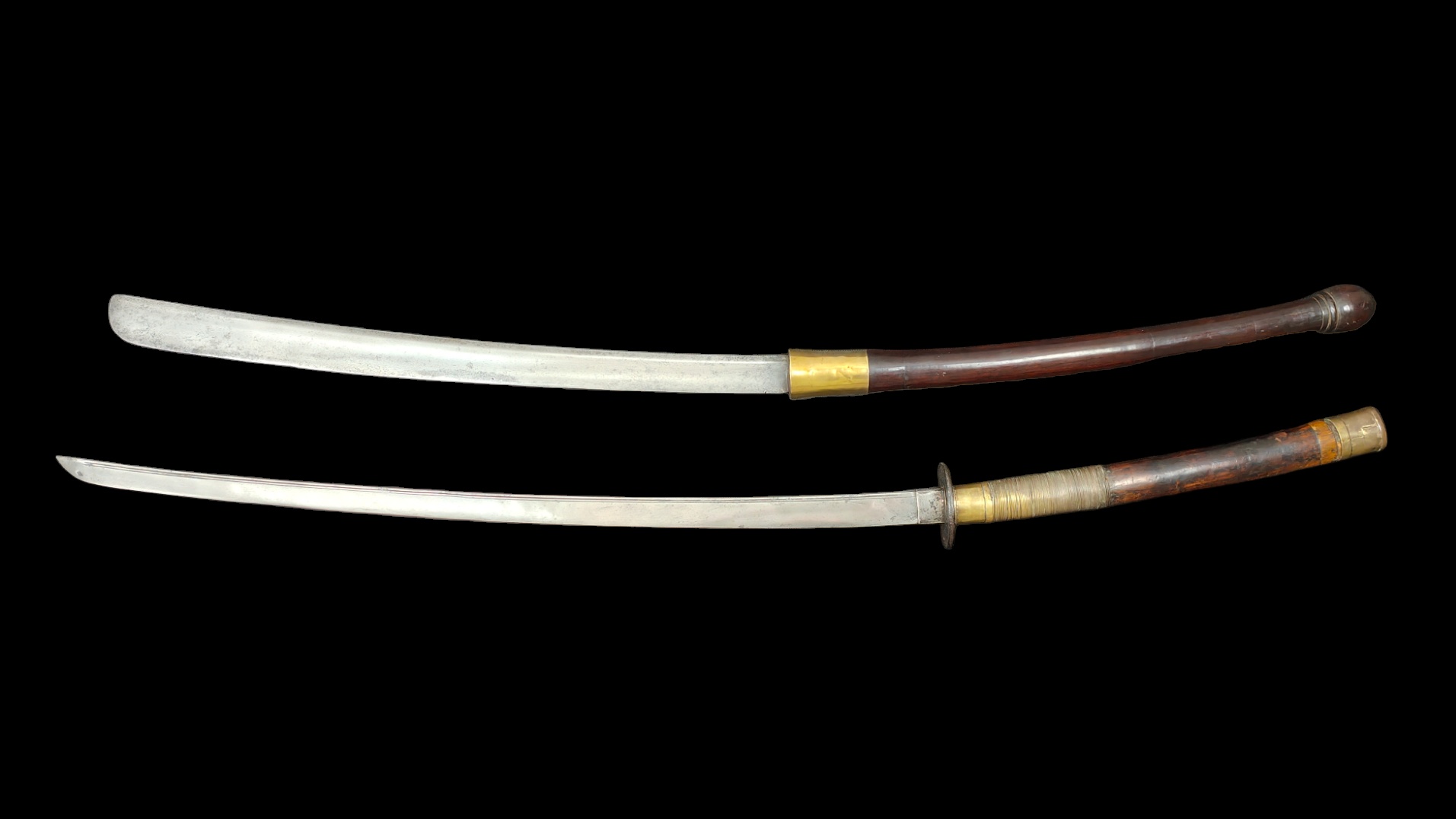
The sword in question shown next to a large likely Cambodian example of a nodachi like weapon
One of the most intriguing elements is the geometry of the blade. Most blades from this region do not have fullers like and this one is hollow forged, with a very shallow fuller, the spine is hammered to a V, somewhat like Lao blades, but then the spine has been flattened at the base, then extending to a very Lao profile towards the tip. The tip itself is of a type that is common to 18th century swords in the Lanna/Lao culture but virtually unknown elsewhere.
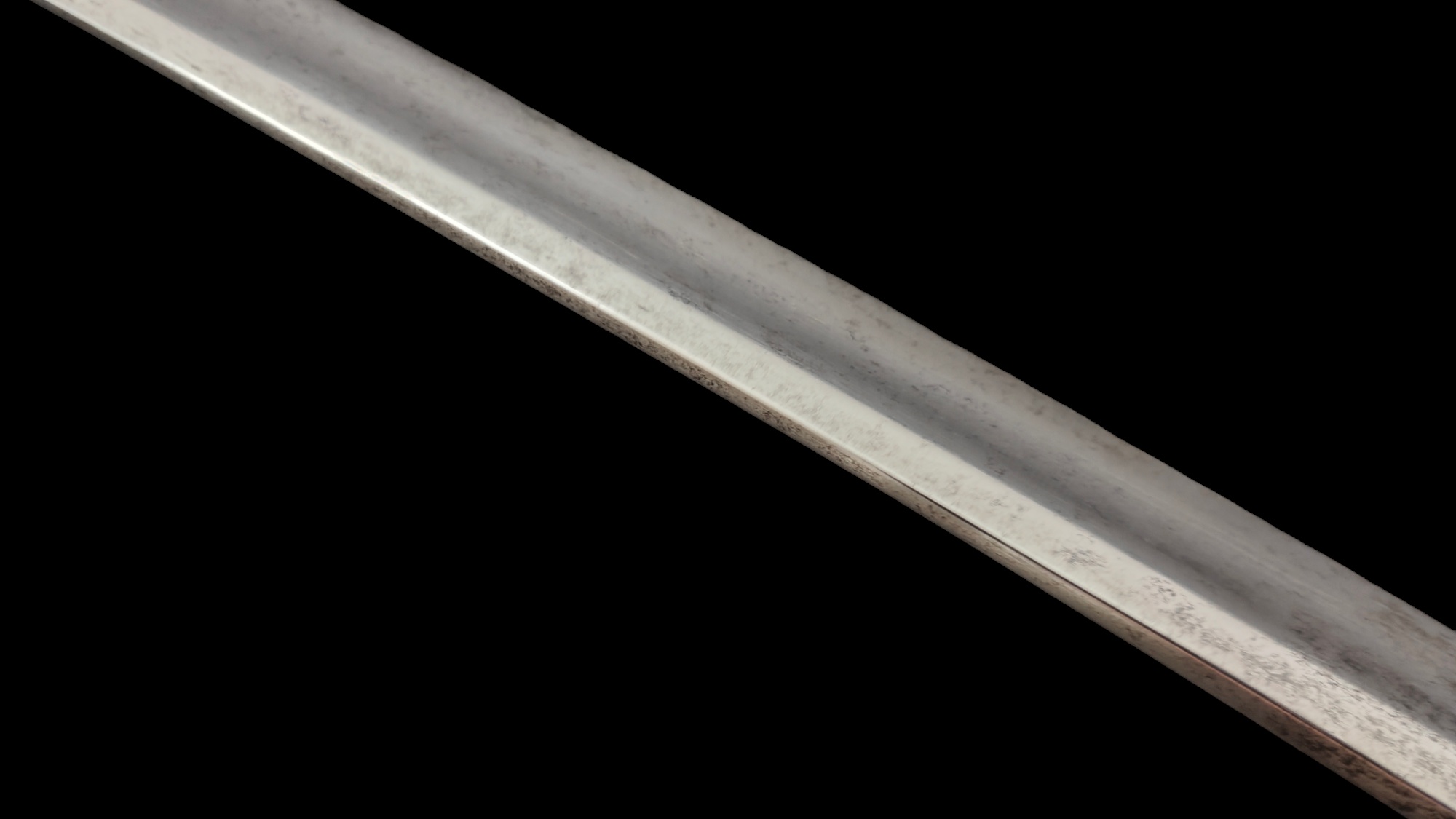
This gives us an indication that this sword, despite its unusual dimensions, could be from the traditional golden triangle, in a political area controlled between Chiang Mai, later Lanna, which extended to the now historic Burmese town of Kengtung mere leagues away from modern day China.
Keng Tung was in fact historically linked to Lanna and the local language and script are very close to modern northern Thai. Keng Tung was ruled by the Tai Khün, an ethnic subgroup of the wider Tai Yai or Shan. Their script is based on the Lanna script dating back to the 13th century rather than Burmese scripts. I mention this to point out that the modern borders between Thailand and Burma do not always reflect the historic influences across the region.
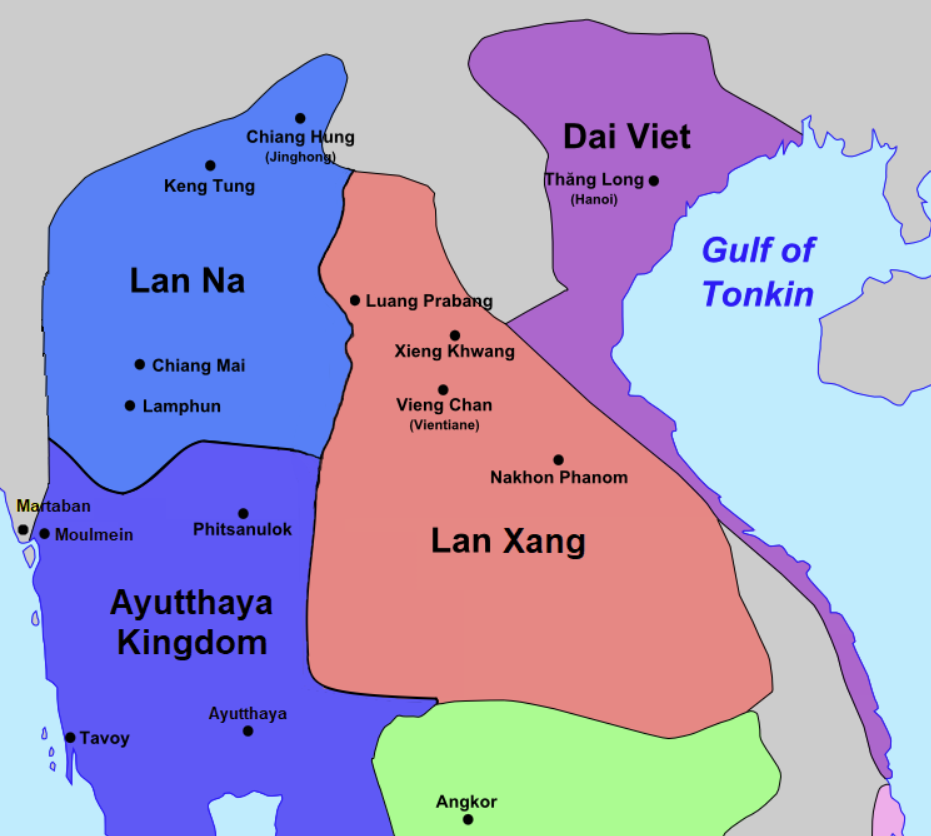
Lanna at it's height in the early 15th century
Very large swords are known in Lanna and are documented in early photography in the region. The image below shows a parade within Lanna at Lampang.
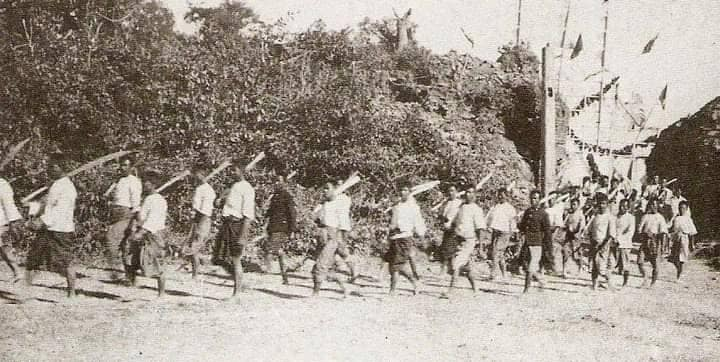
While the exact form of these swords seems slightly different, they are exceptionally large and long weapons. While some examples of very large Shan style swords with pointed tips and rattan handles have surfaced and been sold over the years among collectors and antique dealers, this particular blade shape and handle with the unique carved wooden pommel seems to be one of a kind. The handle is a hardwood, almost certainly rosewood and ends in a nicely carved lotus bud style pommel. The handle and wood show signs of great age and the wear and tear of regular use.
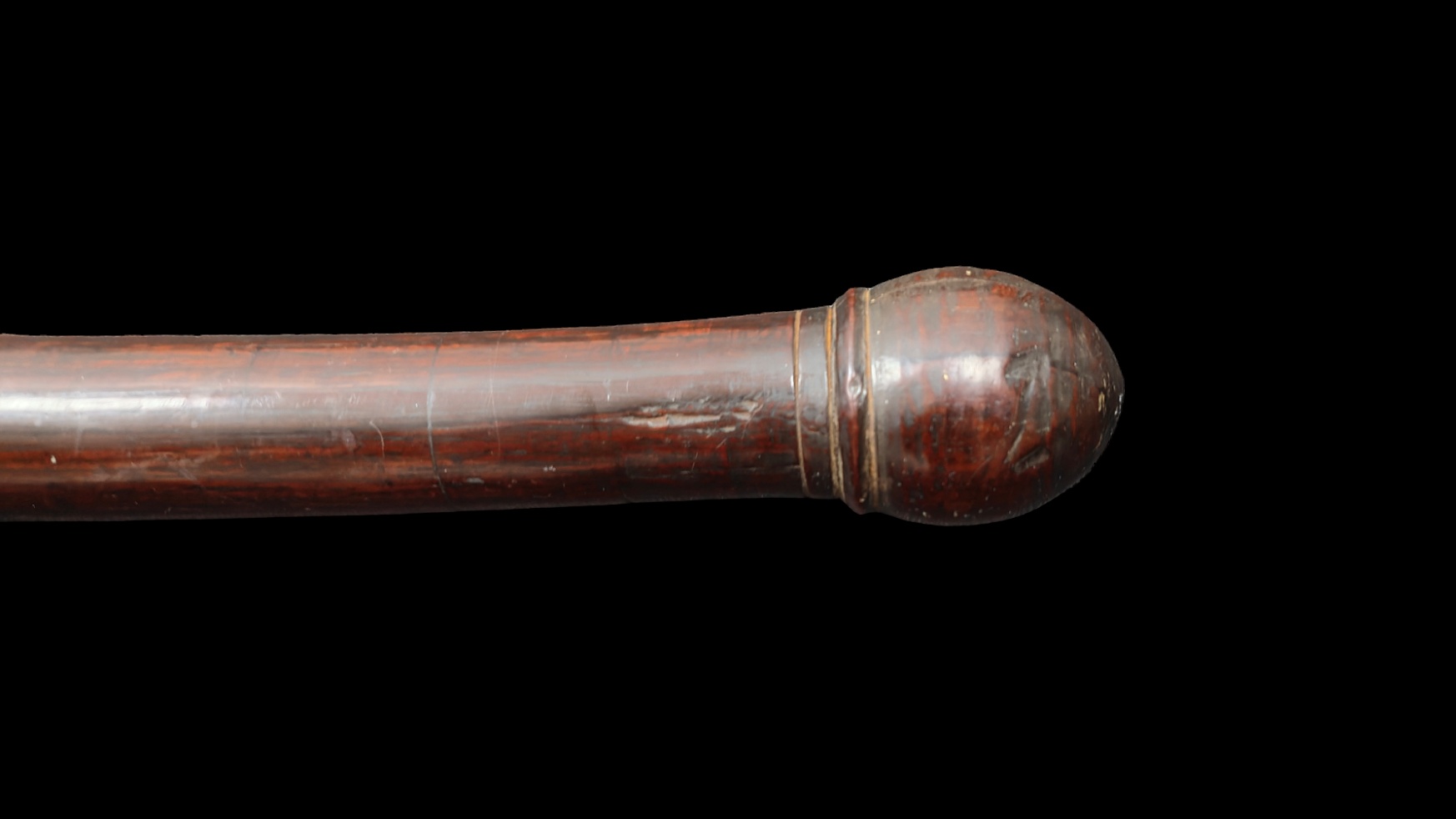
This shape reflects the preference for large pommels on many swords seen near or over the Yunnan border, often worked in silver.
The sword is also quite heavy for a dha, most dha range from 650g to perhaps 900g at most. While this sword is nearly 1.75kg. The length and weight give us another indication of how it was likely used, perhaps more like a short polearm than a regular sword. Shan swords were typically single handed and very agile, that is not to say this larger weapon would not have been gracefully wielded by its owner, but its physical characteristics and therefore the sword form associated with it are radically different.
In some ways it calls to mind other short polearms like Chinese dadao and pudao, although there is not a likely relationship between this sword and those forms, it perhaps filled a similar role. If I had to hazard a guess, I can well imagine this sword being used by a palace guard within one of the Shan states. The use of the golden samrit mounts, both on the sword and scabbard, combined with the deep red of the rosewood handle evoke a colour scheme common to these areas.
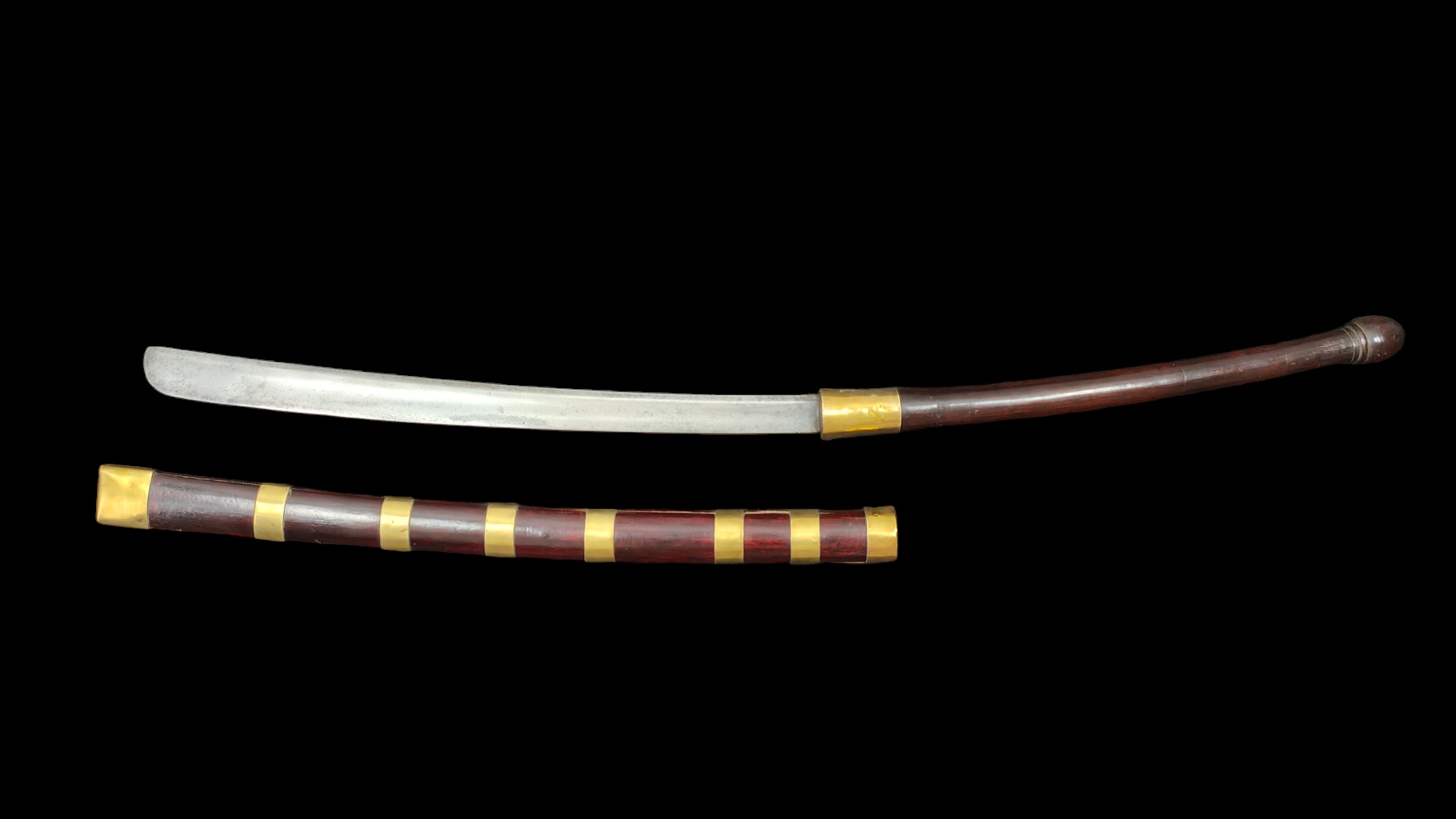
This would be a weapon well suited to defending a gateway into the palace and the Shan states, at least those with ancient capitals like Keng Tung, had extensive walls and fortifications. 12 gates in fact in Keng Tung's case.

A surviving gate in Keng Tung (photo credit)
Now an oft forgotten backwater, Keng Tung was a key lynch pin in the campaigns of the late 18th century during the Qing/Burmese wars as well as a launch point for the Burmese invasions into Siam. Often changing hands and a key point for both the Chinese invasion routes and the subsequent Burmese defence and counter attacks, it was a city that saw frequent large garrisons and military action.
While we will never know if this sword shares a history with this exact area, I am fairly certain it is likely from this period and is a weapon obviously built for the type of fierce combat which occurred during the Qing/Burmese wars. It is a sword that is this unique, which will always likely remain a mystery as we have nothing concrete to compare it too. Even the general attribution and dating are a guess, albeit and educated one. However the mounts, the way the blade is forged and the overall style clearly point to the general area outlined. In many ways it is swords like this that keep my interest in collecting alive, pieces of history that keep their secrets close and force us to admit that we are only caretakers of these items attempting to understand a deeply nuanced and complicated past.